#pygmy cory catfish
Text
Daily fish fact #764
Pygmy corydoras!
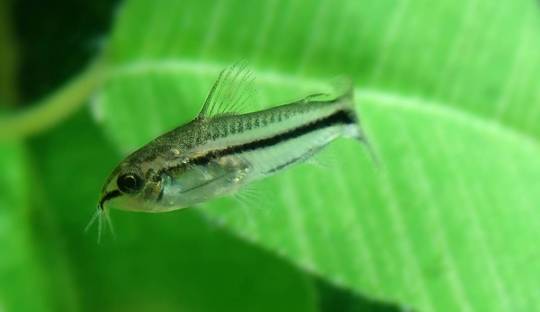
This tiny catfish tends to grow to be about 2.1 cm (0.8 inches). They have an unusual habit of hovering in the water column instead of resting on the bottom!
#fish facts#fishfact#fish#biology#zoology#fishblr#corydoras#cory catfish#corydoras catfish#catfish#pygmy corydoras#pygmy cory#pygmy cory catfish#cory cat
90 notes
·
View notes
Text

Playing a lil bit of catch up for Fishuary now that I finished the first post, so here's Day 6, Catfish!
I did 3 of my favorite corydoras -- I'm hopefully getting some pygmy's and salt & peppers!
#fishuary#fishuary2024#ajitated art#fish#traditional art#pen sketch#fish art#pygmy cory#salt and pepper cory#tail spot cory#corydora#corydora catfish#original art#sketch#fish sketches
10 notes
·
View notes
Text


THEYRE SO FUCKIG SMALL WHAT THE GELL HES SO SMALL WORLD TOU BIG FOR JIM HES JUST A LAD
#fishkeeping#aquarium#fish tank#fish#planted tank#corydoras#cory catfish#pygmy corydora#i actually sobbed after putting them in the tank#theyr so small and happy my eyes hurt so beautiful
6 notes
·
View notes
Text
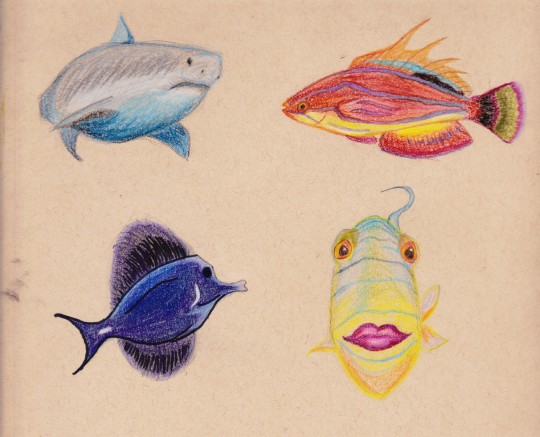


Rapid-fire Fishuary! First week's worth done in one day lol
Day 1 - Shark
This is good ol Terry The Fat Shark from the titular meme, which my friend sends me every single Wednesday 😁The original photo is a great white, maybe even Deep Blue iirc?
Day 2 - Salmonid
Posted on my plushie blog!
Day 3 - Wrasse
Carpenter's flasher wrasse (Paracheilinus carpenteri)
Day 4 - Surgeonfish
Black longnose tang aka Christmas Island tang (Zebrasoma rostratum). Saw one of these once and have been enchanted ever since...
Day 5 - Triggerfish
Queen triggerfish (Balistes vetula)
Day 6 - Catfish
Pygmy cory cats (Corydoras pygmaeus)
Day 7 - Pufferfish
Fahaka puffer (Tetraodon lineatus), specifically @likesplatterpaint's Louie!
33 notes
·
View notes
Text
GUYS WHAT DO I NAME MY PYGMY CORY CATFISH THERES SIX OF THEM
3 notes
·
View notes
Text
New Tally of tanks (2023)
5g light blue shrimp tank
~30 juvenile light blue shrimps
+ 1 nerite snail
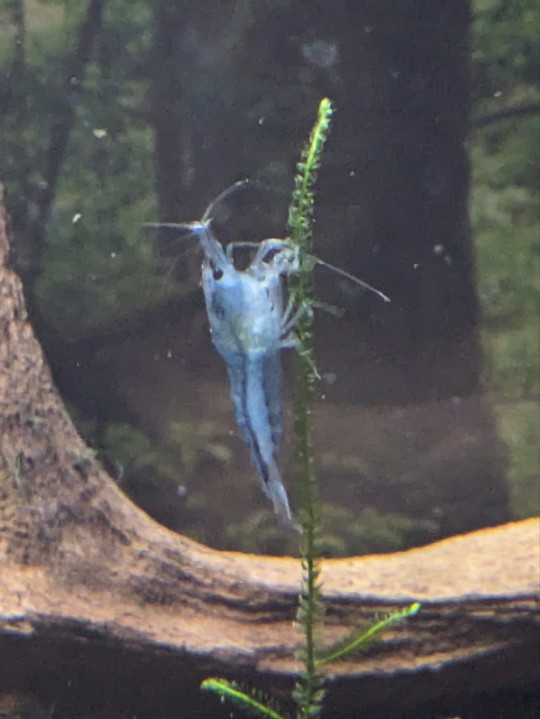

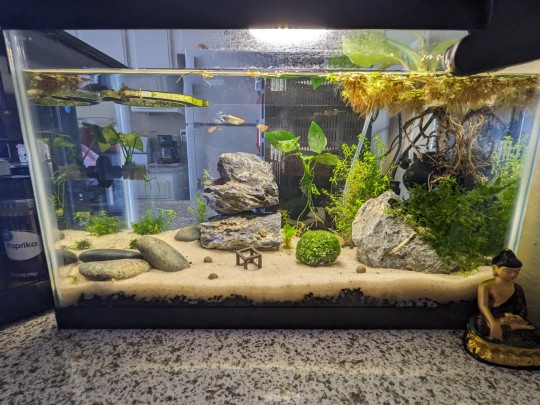
3g bookshelf red shrimp/catfish tank
~15 red shrimps (bloody mary & fire reds)
+ 3 dwarf anchor catfish (Hara jerdoni) (Veikko, Vibeke, and Varg)
+ 1 assassin snail (Assassin Steve)
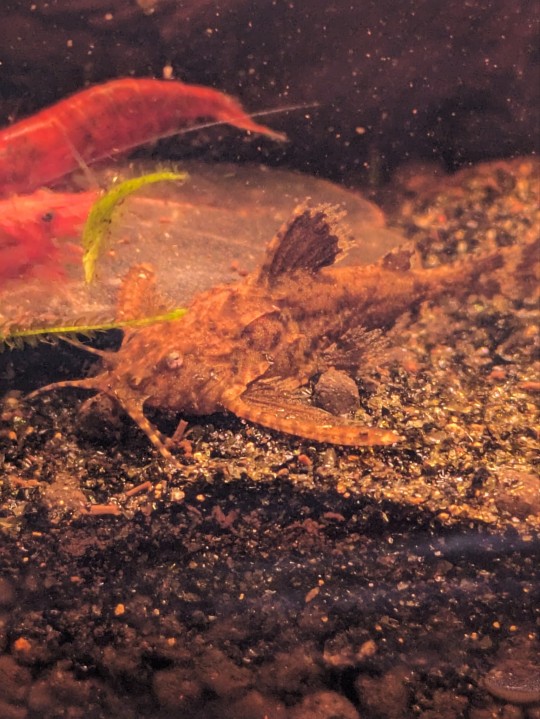



10g quarantine / orange rili shrimp tank
Work in progress
Currently holds 8 pygmy cories (Kitties), skittles shrimp, and ~4 orange rili shrimps


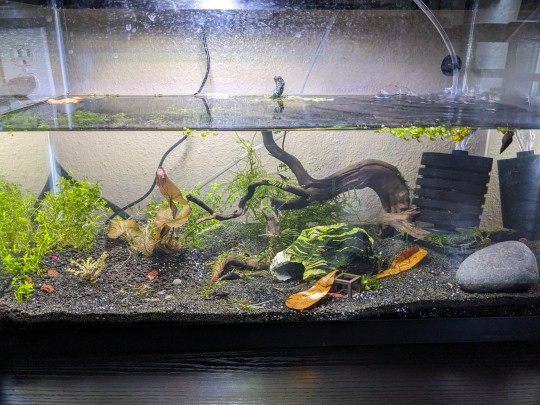
3 notes
·
View notes
Text
Here’s what the fish will actually look like, btw. Chili rasboras in the first pic, Pygmy cories in the second. They’re very tiny, such cute little buddies! They’re both very small and quite shy, limiting the types of other fish they can be kept with, but they get along very well with each other.


[Image description: The first image is a photograph of a chili rasbora, a bright red fish with a black stripe on its side, black eyes and red and translucent fins. The background is a planted fish tank.
The second image is of a Pygmy corydoras, a light gray catfish with a black stripe outlined by two white stripes. It has black eyes and transparent fins. Its whiskers are short and white. It is sitting on a piece of driftwood, and there are plants in the background.
End description.]
3 notes
·
View notes
Text

TINIEST OF BABIES
I love pygmy Cory catfish so much I'm gonna die
#pygmy cory#fishblr#he is just so baby#also theres five of them total this one was the one that stayed still long enough for me to get a pic
4 notes
·
View notes
Text


my new aquarium :3 I'm gonna get some fish soon
the first pic is when I first planted two weeks ago. second I took just a bit ago. the brazilian pennywort (tall plants in the back in first pic) died back pretty aggressively but there is some new growth on them! I'm just letting them float for now until they get their shit together tho lol. added some botanicals (all various pods so far) and have more I will add in like a week. planning on going to get another plant because the rock in the front is an easy planter I haven't used yet. will inevitably move the wood and rock around.
anyway, I'm excited and wanted to show off! I'm planning on getting a betta, 6 ember tetra, 6 pygmy cory catfish, and a nerite snail :3
1 note
·
View note
Text
Can you keep different Cory Catfish species together in one tank?

Introduction
Cory catfish, often referred to as "Corydoras," are a popular choice among aquarium enthusiasts for their charming personalities and unique appearance. These peaceful bottom-dwellers are known for their endearing behavior and are perfect for community tanks. However, when it comes to keeping different cory catfish species together in one tank, there are some important considerations to keep in mind. In this article, we will explore the various Cory catfish types and discuss the feasibility of keeping them together harmoniously in a single tank.
Click here to learn more :-
Understanding Cory Catfish Types
Before diving into the compatibility of different cory catfish species, it's essential to familiarize ourselves with the various types that exist within this group. Corydoras is a diverse genus, with over 170 recognized species. Each species has its own unique characteristics, including size, coloration, and behavior. Here are a few popular cory catfish types:
Corydoras aeneus (Bronze Cory)
Corydoras paleatus (Peppered Cory)
Corydoras sterbai (Sterba's Cory)
Corydoras panda (Panda Cory)
Corydoras habrosus (Salt and Pepper Cory)
Corydoras julii (Julii Cory)
Corydoras pygmaeus (Pygmy Cory)
Compatibility Considerations
While cory catfish are generally peaceful and sociable, it's important to consider a few factors when contemplating keeping different cory catfish species together in a single tank:
Tank Size: Cory catfish appreciate space to explore, and the size of your tank plays a crucial role in their compatibility. A larger tank allows for more fish and reduces the chances of territorial disputes.
Similar Water Parameters: Different cory catfish species may have varying preferences for water parameters like temperature, pH, and hardness. It's crucial to choose species that share similar requirements to ensure they thrive together.
Aggression Levels: Although cory catfish are typically non-aggressive, there can be instances of territorial behavior or competition for food. Mixing species with vastly different sizes or temperaments may lead to issues.
Group Size: Cory catfish are social creatures and thrive in groups. When mixing species, ensure that you have an adequate number of each type to prevent isolation or stress.
Compatibility with Tankmates: Consider the other fish species in your tank as well. Some species may be more compatible with certain cory catfish types than others. Avoid keeping aggressive or predatory fish with your cory catfish.
Potential Combinations
While it's generally recommended to keep cory catfish of the same species together, there are some combinations that can work successfully if you follow the compatibility guidelines:
Corydoras aeneus and Corydoras paleatus: These two species are relatively similar in size and temperament, making them a suitable pairing for a community tank. Ensure the tank is appropriately sized and provides plenty of hiding spots.
Corydoras panda and Corydoras habrosus: Both species are small and peaceful, making them great choices for a peaceful community tank with other small, non-aggressive fish.
Corydoras sterbai and Corydoras julii: These species have similar care requirements and can coexist peacefully. Ensure your tank is large enough and provide plenty of hiding places.
Corydoras pygmaeus and Corydoras habrosus: These tiny cory catfish types are excellent choices for small tanks. Their small size and peaceful nature make them ideal for micro-sized community setups.
Conclusion
While mixing different Cory catfish types species in one tank can be possible, it's essential to consider various factors to ensure a harmonious coexistence. Tank size, water parameters, aggression levels, group size, and compatibility with tankmates all play vital roles in determining the success of such a setup.
It's crucial to research the specific requirements of each cory catfish type you intend to keep and plan your tank accordingly. Always prioritize the well-being of your fish by providing appropriate hiding spots, maintaining stable water conditions, and monitoring their behavior closely. By taking these precautions, you can create a thriving and visually captivating community tank featuring a variety of cory catfish species.
Read more : - How do Indian Spitz dogs contribute to their families or communities in rural India?
0 notes
Text
Please enjoy my pygmy Corydoras having a nibble
fyi this fish is about 2 cm long
19 notes
·
View notes
Photo

Pygmy cory cat #pygmy #pygmycory #cory #corycatfish #catfish #fish #fishroom #fishkeeping #fishbreeder #aquarium #aquariumhobby #aquariumfish #aquariumsofinstagram #aquariumsofinstagram #rutherfordpetsupply #rutherfordaquascaping (at Spindale, North Carolina)
#rutherfordpetsupply#corycatfish#pygmycory#fishroom#aquarium#aquariumhobby#cory#fishbreeder#aquariumfish#pygmy#aquariumsofinstagram#fishkeeping#fish#rutherfordaquascaping#catfish
1 note
·
View note
Text
5 Underrated Corys You’ll Want to Keep Next
Cory catfish are one of the most common fish in the trade. They’re cute, peaceful bottom dwellers that love groups and generally stay on the smaller side. There are a number of popular species, but there are dozens more that are not as well known and are just as interesting and adorable. Here I’ll talk briefly about 5 species of the subfamily Corydoradinae that I wish were more popular!
Please note these are NOT care guides, just brief introductions to some fascinating species. Make sure to do thorough research on the care needs of these fish before taking any home.
5. Corydoras bethanae (CW006)

Image credit: Charly Eon
I love the big swooping black stripe on CW006. This species is found in the Blanco and Ucayali river basins in Peru. The paper initially describing the species measured specimens ranging from 43.7-57.5mm SL, or approximately 1.2-2.3 inches, making this a pretty small fish! They are similar in appearance to both Corydoras aurcatus and Corydoras granti, so go ahead and check those species out if you love the bold arc stripe on C. bethanae but are struggling to find them for sale. While I could not find water parameter information for sites confirmed to contain this species, localities near the area they have been found contain soft, acidic water with sand substrate.
4. Aspidoras spilotus (C125)

Image credit: Johnny Jensen’s Photographic Library
That’s right, not everything in the subfamily Corydoradinae is in the genus Corydoras! The genus Aspidoras contains several underrated species of catfish that have not enjoyed the popularity of their cousins. This species has some lovely patterning and seems to be the most common Aspidoras in the trade. The type locality is from Riacho dos Macacos a tributary of River Acaráu in Brazil. They reach roughly 1.8 inches in length and like their water a bit on the acidic side of neutral.
3. Corydoras ortegai (CW031)

Image credit: Johnny Jensen’s Photographic Library
Who can resist these little corydoras with their skeleton-like patterning and black mask? From the paper first describing them, the holotype and paratypes measured between 0.85-1.28 inches (25.9-32.7mm), making them about as petite as pygmy corys (Corydoras pygmaeus) though in my opinion they have a much more attractive coloration. Their type locality is Río Putumayo basin in Peru, which contains muddy colored water and a soft clay and sand bottom. I could not find information on temperature and other water parameters, but they were found sympatric with Corydoras pastazensis which is a potential gateway to parameter information. Additionally this paper discusses various habitats of fish in Peru and may have good information on habitat and parameters as well.
2. Scleromystax barbatus (No C or CW number)

Image credit: Mark Smith
In addition to Corydoras and Aspidoras, there’s also genus Scleromystax! This species is the easiest of the genus to find for sale n the hobby. I love the gorgeous, almost hieroglyphic patterning on these guys. They’re on the larger side at nearly 4 inches so perfect for someone who doesn’t want a tiny catfish. Their type locality is Fazenda da Japuhyba near Angra dos Reis in Brazil. They like an acidic to almost neutral pH and do best between 68-76°F.
1. Corydoras sp (CW010) (Gold laser cory)

Image credit: Mark Smith
These are probably one of my absolute favorite Corydoras of all time, with their stunning golden coloration and bright sheen. It’s not very visible in this specimen, but they have a bright orange stripe along the top of their body. They are native to Peru. Despite this being one of the more popular listed species, I couldn’t find much information on their wild habitat, likely due to this species not yet having been officially described.
Bonus: Corydoras sp. (CW069)

Image Credit: Eric Bodrock
I hesitated to include this species because they have few keepers listed on Planet Catfish and I was unable to find anyone selling them, but they are so gorgeous I couldn’t help myself. Eric Bodrock on Planet Catfish notes that this species is quite similar to Corydoras gossei, and suspects many “C. gossei” in the trade are mislabeled CW069. I was able to find several people who have or had fish labeled as C. gossei for sale so that is something to look into if you are as captivated by this beautiful species as I am! I could not find much information on their habitat but as they were said to be imported with C. gossei, they may inhabit waters nearby. The C. gossei type locality is Near Guajará Mirim in the Mamoré River basin in Brazil.
Which species from this list is your favorite? Which species in the family Corydoradinae do you wish had been included? Let me know!
85 notes
·
View notes
Photo

So... I got into a new hobby since c-ent is on fucking fire, here’s my new aquarium! The last time I had a fish tank I was just a little kid, so it’s been an interesting learning experience. I got the tank and most of the critters secondhand from someone who wasn’t able to keep them anymore, with almost zero knowledge especially since I only knew what fish I was getting on the day I got them. And man I was not prepared for what I was getting into LOL.
I kind of figured the tank was overstocked from the get-go. General guide is one inch of fish to one gallon of water, so a 4-gallon like this one should only have had four small fish, maybe a couple of shrimp and a small snail. I received:
1. one dwarf short-bodied pearl gourami (about 2″ long)
2. two sunburst-orange GloTetras (white skirt tetras genetically modified to look like someone coloured them with highlighter pens)
3. what I was told was going to be three neon tetras (only one was actually a neon tetra, the other two were cardinal tetras 🙃)
4. four pygmy corydoras catfish
5. two kuhli loaches
6. two amano shrimp
7. one red onion nerite snail
Not only should all these critters have been in at least a 10-gallon tank, they are almost all schooling fish and would have done better in a wide tank instead of a tall tank, in groups of at least six of their own kind. The GloTetras in particular like to dart around and need a lot of space, probably a 20-gallon just for them alone. The one fish that was fine solitary was the gourami... which is a labyrinth fish from the Osphronemidae family, i.e. like a betta a.k.a. Siamese fighting fish and should have been in a 5-gallon on its own.
Needless to say... the fish were not in a great state. They came to me all squashed in a half-gallon tupperware container and the GloTetras had swim bladder problems and couldn’t stay upright. The gourami was stressed so it became aggressive and a fucking asshole. I had two baby neon tetras of my own and one cherry shrimp, and it chased the baby fish around the tank until they died of exhaustion, then pecked at the shrimp and eventually killed and ate it. The gourami kept chasing the GloTetras and nipping their fins so I separated them into an emergency old tank temporarily but it was way too small and they got stuck in the java fern I put in there and died too.
I made mistakes of my own too. I didn’t know that the corys and loaches needed a sand substrate – I bought rounded gravel, and I don’t know if that’s why most of the corys died (or if it was because the tank wasn’t cycled properly because I’m new to this). One of the loaches got wounded and the meds the fish shop recommended to me turned out to be fatal for loaches 😭.
And I made some bad purchases. I was recommended a little golden fish to replace the corys that I mistook for a bristlenose pleco, which stays small, and when I asked the guy who owned the fish shop what type of fish it was, he told me “吃藻类的咯” (it eats algae) 🙃 It turned out to be a golden chinese algae eater (so he was sort of right but only because the name of this fish is so straight-forward lol) and it grows to about 30cm. Uhh. That’s longer than my tank. Also, it will eat the scales off sleeping fish when it gets bigger 🙃 but “luckily” the gourami killed it on the second day 🙃 When I told him I wanted a small snail for my half-gallon (intended to be a shrimp tank), this same guy sold me a snail that was 1cm diameter when I bought it, but one month later is approaching the size of a tennis ball 🙃
(It’s an apple snail and it’s eaten all my plants, and I tried five different things until I finally found three plants it’s not super keen on. I’ve named it 牛魔王, Bull Demon King, because in Chinese, snail is 蜗牛. Maybe “mischievous” isn’t the first word you’d think of to describe a snail, but this one parkours from plant to plant, climbs up as high as it can go and dive-bombs the tetras, and is so fascinated with my one remaining cory that it will chase it all over the tank until the cory gives up and lets it stroke it gently with its tentacles. I can imagine it going “HELLO SMALL FRIEND” as it terrorises the poor cory lol.)
Well, on the bright side, since so many fish died, the tank is no longer overstocked. The gourami wounded its head trying to squeeze into a small safe space I made for the surviving tetras and the wound got infected, so I quarantined it to medicate it. Luckily, it’s the only fish I have that can actually take the medicine (I think it’s malachite green – the problem with asian-brand meds is there are no ingredients listed on the bottle). I think I’m keeping it separate even after it gets better.
The bad news is, my partner was trying to be helpful and threw away my old filter sponge – and with it, the beneficial nitrifying bacteria that I have been cultivating for three months 🙃 So I have to cycle the tank from scratch again. Sigh. I hope I manage to keep all the fish alive this time.
#personal ramblings#aquablr#fishblr#apple snail#long post#keep fish they said#it'll be relaxing they said#neon tetras#cardinal tetras
13 notes
·
View notes
Note
Howdy! Do you have an stocking suggestions for a 10-15 gallon tank beyond a betta? Interested in trying out other types of fish but when I see the internet making suggestions like swordtailsand kuhli loaches I don't trust any of the lists I've come sctosd so far.v
Yeah Swordtails are poor choices in this size tank... they are built for speed! They really need at least 29 or 40 gallons.
Other livebearers could work though. Endler's livebearers are a fantastic choice for a 10 gallon tank and I can't recommend them highly enough. Guppies are better in the 15+ gallon range, and Platies will work okay there too (but are honestly better in 20+). Also consider some of the Micropoecilia livebearers like Swamp Guppies and Para Mollies.
Some smaller tetras would work here. Ember and Ruby tetras are small enough for a 10 gallon; Neons, Dwarf Pencilfish, and possibly Glowlights are options in a 15.
There are some smaller catfish worth considering. Asian Stone Catfish are a good choice, as are potentially Driftwood Catfish, in a 10. Pygmy Cory Cats will do fine in a 15. I don't recommend "normal" Cory cats below 20, honestly. They get chunky!
Other groups are also possible - a few that come to mind are ricefish, smaller blue eyes, celestial pearl danios, Dario species, bumblebee gobies, maybe a pair of killifish... it all depends on what sort of water you have though.
Hope that helped a little!
3 notes
·
View notes